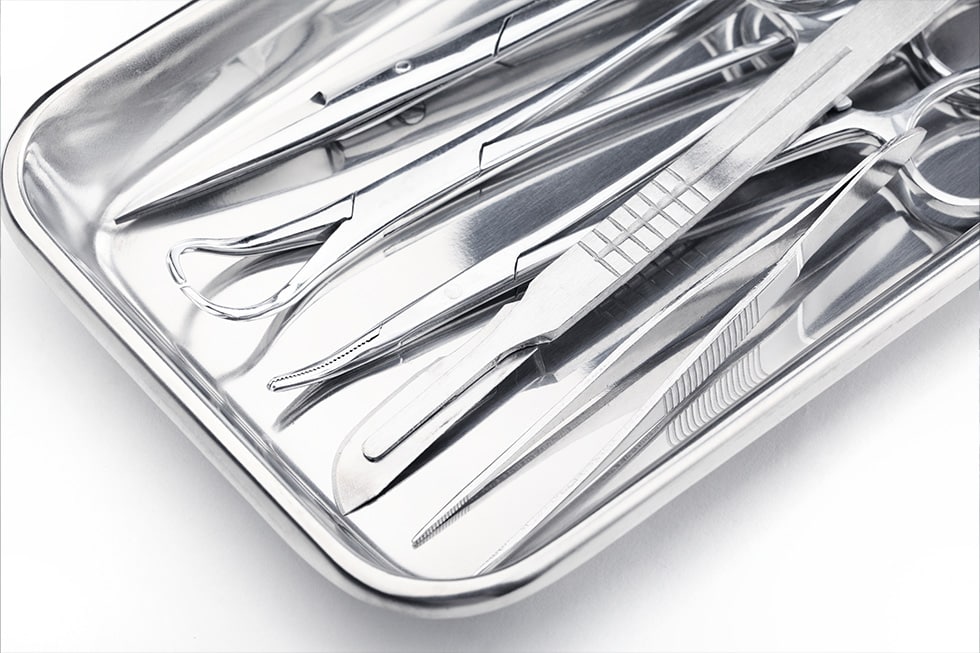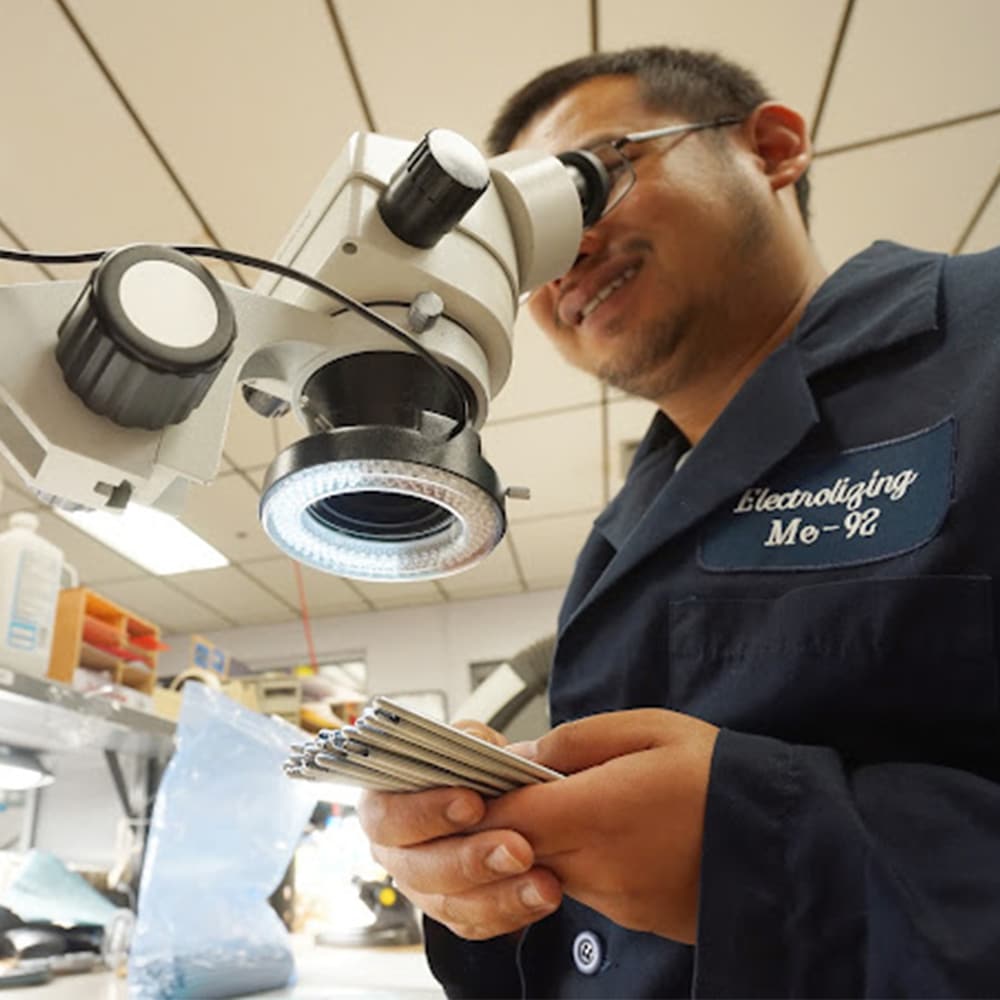
Two areas where ME-92 Operations strives for ever-higher levels of excellence are product quality and regulatory compliance in a medical device coating. And we’re honored that your clients and the regulatory entities we deal with will tell you that we continually hit the targets we set for ourselves.
Raising the Bar on Medical Instrument Quality
Delivering high-quality products and services is important to every business and its customers. Nobody ever says, “If the items are halfway decent, we’re good with that.” But in the medical instrument industry, quality can, quite literally, be a matter of life and death.
Not every tool is used in that type of scenario, of course. But whenever a medical instrument, device, or piece of equipment is used, there is an expectation that it will perform exactly as designed. And that includes that its advanced medical device coating will provide the expected performance—preventing damage, maintaining a like-new appearance, not chipping or flaking, etc.
To produce coatings of the highest quality consistently, a company has to develop and document repeatable processes and ensure its employees use them.
Seeing Compliance as an Opportunity, Not an Obligation
There are two ways to look at regulatory compliance: as a box you have to check to stay out of trouble or as an important standard and one that you’re eager not just to reach but to exceed. At ME-92 Operations, we find that the latter approach is more rewarding.
We take pride in being recognized experts in our field. And that expertise includes operating in a way that meets every applicable rule, regulation, and guideline. There’s nothing to be gained—for us or, more importantly, our customers—by us cutting corners or using a very loose interpretation of the rules.
We practice strict adherence to the requirements in our industry. And here again, we do so by documenting and enforcing best practices, and by ensuring that our company has a culture that prioritizes quality and compliance.
Our “Medical Device Coating Specification”—the Last Word on Quality and Compliance
Decades ago, we developed a document with the unassuming title of Medical Device Coating Specification, and we’ve continually updated it as needed ever since. The stated purpose of this document is to “define the requirements for the application and process control of ME-92® coating to surgical instruments and medical devices.”
There’s nothing ambiguous about that statement. What follows it are “requirements” not helpful suggestions or a wish list. The document is, essentially, the foundation of everything we do at ME-92 Operations.

Quality inspector carefully looking over ME-92-processed parts with a microscope
Process Standards
Occupying nearly a page of the four-page document are what we call our process standards. Some of the many entries in this section include:
- Cleaning: Where chemical methods are a requirement, solutions will not affect the base material by etching, pitting or intergranular attack. Mechanical cleaning methods used to remove oxides or to remove surface imperfections shall not alter dimensions.
- Masking: Where device specifications require the absence of medical device coatings on specified feature(s), ME-92® Operations shall custom design and employ suitable masking methods.
- Coating: ME-92® coating is electrolytically deposited directly to the base metal without any intermediate coating. Components are not exposed to solutions that exceed 200°F. Solutions shall be neutralized and rinsed from components before drying. The coating thickness will vary by application and customer design. It is suggested that each application be reviewed with ME-92® Operations before final selection.
- Coating removal: You can remove and reapply the ME-92® coating without altering the dimensions of the base material. Applications include molds, cavities, core pins, or conditions where refurbishment may be necessary depending on hours or cycles of product use.
Quality Assurance
A few of the key entries in this critical section include:
- Incoming Inspection: Components shall undergo visual inspection using the listing of guidelines in ANSI/ASQC Z1.4 Level II. At a minimum, the same inspection level shall be applicable for tight tolerance components with critical dimension requirements to verify fabrication allows for a full range of coating deposit.
- In-Process Inspection: Samples shall pass inspection dimensionally and visually for proper deposit thickness and appearance after the first processing batch of each purchase order. Random sampling is then conducted throughout the order as required.
- Final Inspection: 100% of each order shall pass visual inspection for appearance. Job records undergo review for accuracy and compliance to the purchase order and blueprint requirements.
- Record Retention: Device history records for coating applications are in digital storage for the lifetime of the component.
Process Control
Standards from SAE International and the U.S. Food and Drug Administration guide our process control measures. Some of them are:
- Hardness testing to AMS 2438 per ASTM E384-17
- Adhesion testing to AMS 2406, AMS 2438 and AMS 2460 per ASTM B571
- Corrosion testing to AMS 2438 Salt Spray 50 hours per ASTM B117
- Abrasion and wear resistance testing to AMS 2438 Taber test per ASTM D4060
- Cytotoxicity testing per US FDA GMP 21 CFR Parts 210, 211 and 820
- Bacterial Endotoxins Test (BET) per US FDA GMP 21 CFR Parts 210, 211 and 820
Opaque Coatings. Full Transparency.
At ME-92 Operations, our record on product quality and compliance isn’t something we’ve achieved by chance or even as a result of the efforts of our highly skilled and experienced team members—as important as those efforts are. And the source of our achievements isn’t a secret. We’re very transparent about how we run our operations, from start to finish.
We’re successful because we have well-documented, time-tested processes that enable us to deliver great work on time, every time. And, because we’ve been doing this for decades and know “what works,” we’re also adept at extrapolating from what has worked on countless past projects to what will work for an innovative new medical instrument, device, or piece of equipment.